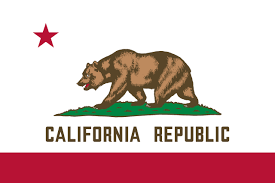CVC 21655: High Occupancy Vehicle (HOV) Lanes
CVC 21655 is a section of the California Vehicle Code (CVC) that outlines the rules and regulations governing the use of High Occupancy Vehicle (HOV) lanes, also known as carpool lanes, in the state of California. HOV lanes are designated lanes on certain highways that are reserved for vehicles with a minimum number of occupants. These lanes are intended to encourage carpooling, reduce traffic congestion, and promote more efficient transportation.
Here are the key points of CVC 21655:
-
Occupancy Requirements: CVC 21655 specifies the minimum number of occupants required for vehicles to use HOV lanes. Typically, this requirement is for vehicles to have two or more occupants, including the driver. Some HOV lanes may have different occupancy requirements or exemptions, so it's essential to check the signage for specific lane rules.
-
Designated Hours: HOV lanes often have specific hours of operation during which the occupancy requirements apply. These hours are indicated on signs posted along the highway. Outside of these hours, the HOV lane may be open to all vehicles.
-
Clean Air Vehicles: Certain clean air or low-emission vehicles, such as electric vehicles or hybrid vehicles, may be eligible for a Clean Air Vehicle (CAV) decal that allows them to use HOV lanes with a single occupant. However, this exemption has specific eligibility criteria, and not all clean air vehicles qualify.
-
Enforcement: Law enforcement agencies are responsible for enforcing the rules of HOV lanes. Violations can result in penalties, including fines and potential points on a driver's record.
-
Exemptions: Some vehicles, such as transit buses, emergency vehicles, and motorcycles, are exempt from the occupancy requirements in HOV lanes and are allowed to use them regardless of the number of occupants.
Why CVC 21655 Matters:
CVC 21655 is significant for several reasons:
-
Traffic Management: HOV lanes help manage traffic congestion by encouraging carpooling and reducing the number of single-occupant vehicles on the road.
-
Efficiency: HOV lanes can provide a faster and more efficient commute for carpoolers and eligible clean air vehicle drivers, particularly during peak traffic hours.
-
Environmental Impact: Encouraging carpooling and clean air vehicle use can help reduce emissions and promote environmental conservation.
-
Legal Compliance: Adhering to CVC 21655 is a legal requirement. Violating these regulations by driving in HOV lanes without meeting occupancy requirements can result in penalties.
Penalties for Violation:
Penalties for violating CVC 21655 can vary depending on the specific circumstances, local jurisdiction, and the severity of the violation. Common penalties may include fines, and more severe consequences can result from repeated violations or fraudulent use of HOV lanes.

DontPayTickets.com
Fight Back California Traffic Violations and Tickets

